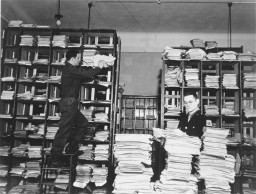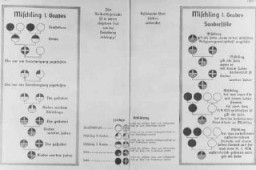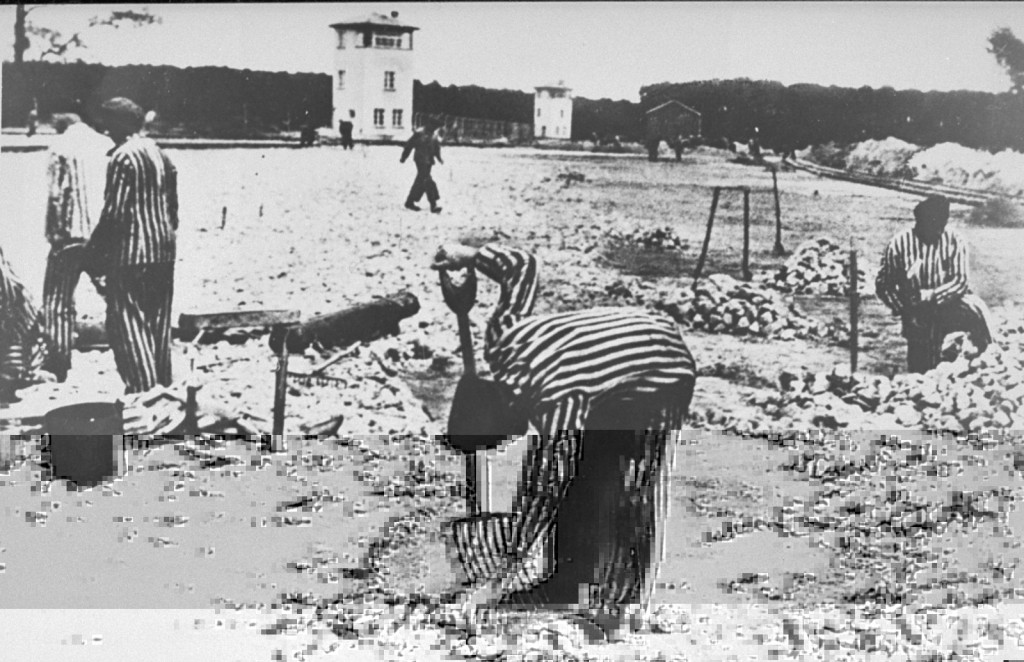<< Previous | Displaying results 6581-6590 of 6704 for "" | Next >>
-
Soviet Prisoners of War
SeriesThe Nazis perpetrated mass murder against groups considered to be racial, civilizational, or ideological enemies. This included Soviet prisoners of war. Learn more
-
Holocaust Denial
SeriesHolocaust denial is any attempt to negate the established facts of the Nazi genocide of European Jews. Explore the articles in this series to learn about Holocaust denial and its origins.

-
International Military Tribunal
SeriesBrowse a series of articles about the establishment of the International Military Tribunal at Nuremberg and the larger context of postwar trials.
-
Antisemitism
SeriesLearn about the history and causes of antisemitism (hatred of Jews) and its role in Nazi ideology.

-
Nazi Rule
SeriesThe Nazis took control of the police and turned Germany into a dictatorship; implemented a racist ideology; and carried out brutal policies across annexed and occupied Europe. Learn more.
-
Jews in Prewar Germany
SeriesLearn about Jewish life in Germany and Europe before WWII, antisemitic laws, and Nazi violence and discrimination against the Jews of Germany.
-
The "Final Solution"
SeriesThe Nazi “Final Solution to the Jewish Question” was the deliberate, planned mass murder of European Jews. Learn more about how the Nazis implemented the "Final Solution."
-
Nazi Camp System
SeriesLearn about the history of the Nazi camp system, the different types of camps, who was imprisoned and why, and conditions in the camps.
-
Rescue and Resistance
SeriesBrowse a series of articles describing how some Jews survived the Holocaust; rescue efforts; anti-Nazi resistance groups; and revolts against Nazi oppression in the Warsaw ghetto and in killing centers.
-
Righteous Among the Nations
SeriesLearn about some of the Righteous Among the Nations, non-Jewish individuals who have been honored by Yad Vashem, Israel's Holocaust memorial, for risking their lives to aid Jews during the Holocaust.
